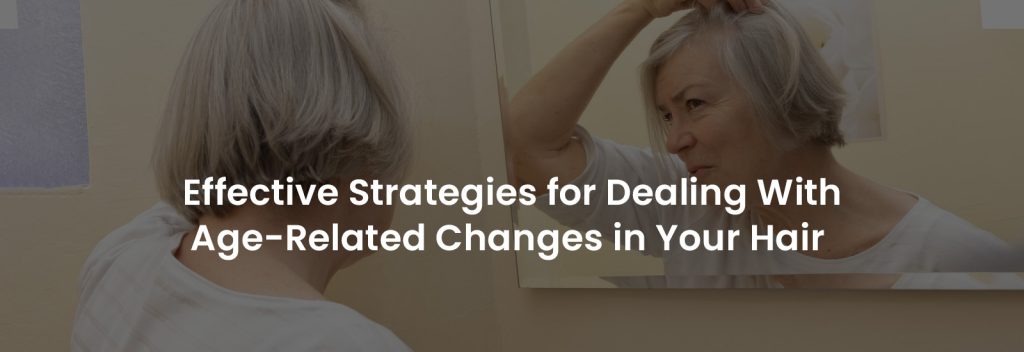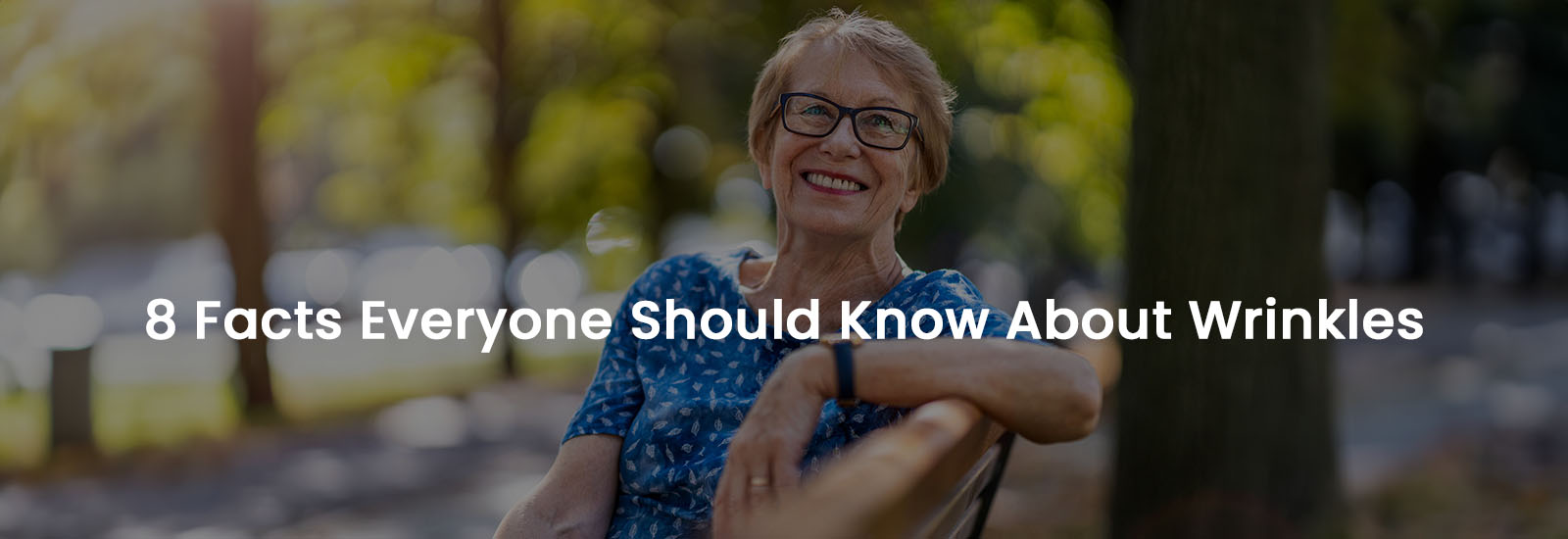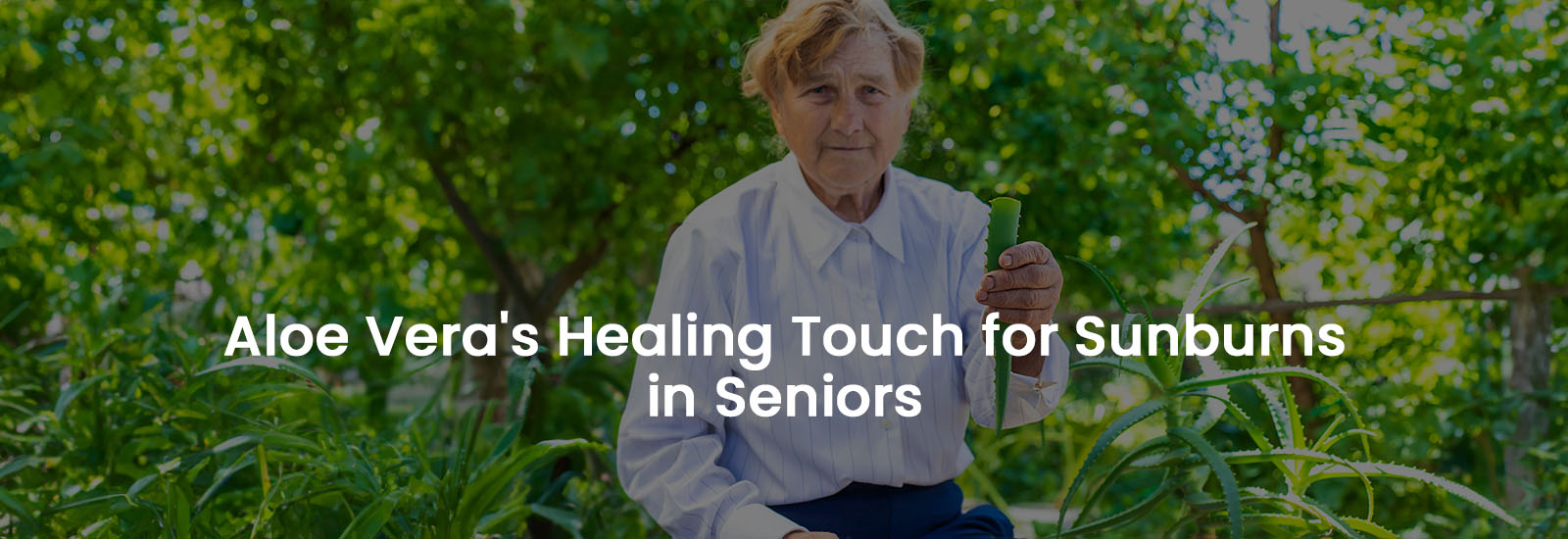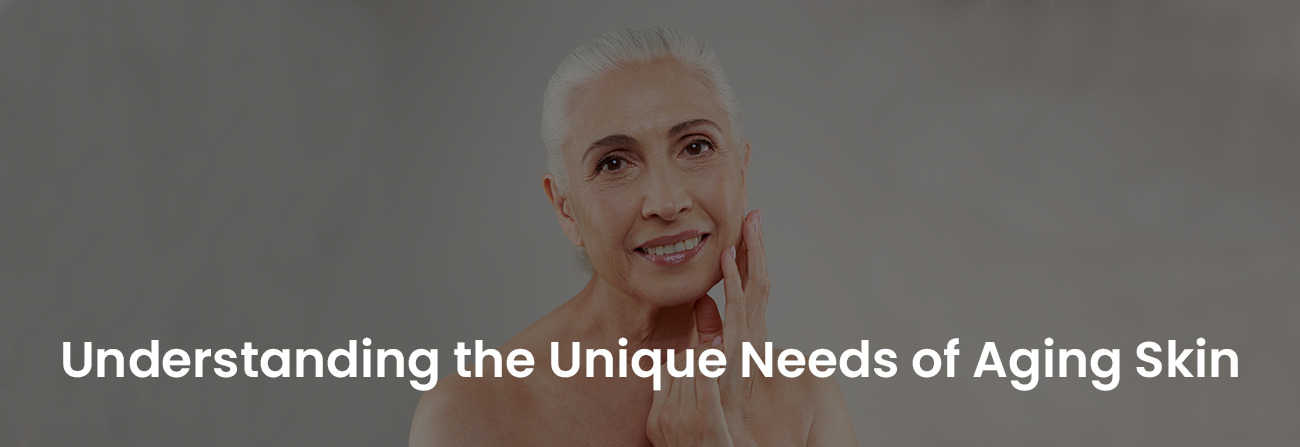
Hair is an essential part of our appearance, and it plays a significant role in how we perceive it. However, the body goes through physical changes with age, which also affects the hair. Once thick locks start to thin out, leading to baldness in some individuals, that luscious hair color may turn gray or white. These age-related changes may cause anxiety or self-consciousness, even though these changes are perfectly natural.
Read More: Behavioural Changes in Older Adults with Alzheimer’s Disease
Let’s check out the factors that cause age-related changes in the hair and learn how to take care of and manage hair change with some modifications in the health care and lifestyle.
Understanding Age-Related Changes in Hair
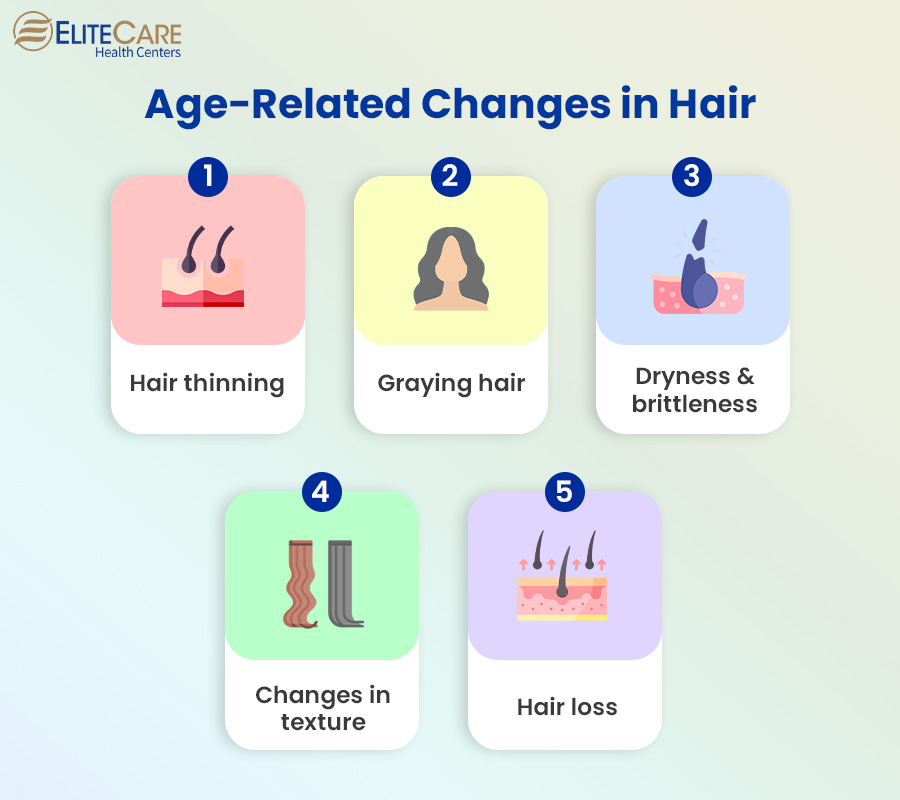
The most common type of assistive devices for older adults include:
1. Normal hair growth cycle
Hair goes through three phases of growth: anagen (growth phase), catagen (transition phase), and telogen (resting phase). It is a process in which hair grows, falls out, and is replaced by new hair. In seniors, this process slows down, and hair has less time to grow before falling out. This causes short fine wispy hair and makes hair thinner and more fragile.
2. Changes in hair texture, density, and color
With age, hair becomes thinner, finer, and less dense. Hair may also change in color. The natural pigmentation in hair fades due to decreased melanin production, causing hair color to change to gray or white. Some seniors may also notice that their hair becomes more coarse, wiry, or brittle due to changes in the hair follicles as the scalp produces less oil to keep hair healthy and hydrated.
Read More: 7 Drinks to Keep the Elderly Hydrated
3. Hormonal and genetic factors
Hormonal changes during menopause can lead to hair thinning and loss in women. Additionally, genetics can play a role in hair loss and balding, with male pattern baldness being a common example.
4. Lifestyle choices
Lifestyle choices can greatly impact the health and appearance of a senior’s hair. Poor diet, smoking, seasonal change and insufficient exercise can contribute to hair thinning and loss. Additionally, excessive sun exposure, over-styling, and harsh chemicals can damage hair and make it more brittle.
Managing Age-Related Changes
1. Healthy hair care practice
Seniors can maintain healthy hair by following some simple hair care practices, such as:
Use a gentle shampoo
Choose a gentle and formulated shampoo according to seniors’ hair type. Avoid shampoos that contain harsh detergents, sulfates, or alcohol, which can strip the hair of natural oils.
Condition regularly
Use a conditioner formulated for hair type after shampooing to help keep hair soft, smooth, and shiny. Leave the conditioner in for a few minutes before rinsing it out.
Avoid heat styling
Tools like curling irons, straighteners, and blow dryers can damage hair and make it more brittle. If it is necessary, use these tools on the lowest heat setting and apply a heat protectant beforehand.
Protect hair from the sun
Just like the skin, hair can be damaged by the sun’s UV rays. Seniors should wear a hat or scarf when going out.
Eat a healthy diet
A balanced diet rich in vitamins and minerals can help keep hair healthy. Foods like fish, nuts, and leafy green vegetables contain nutrients for hair health such as omega 3, biotin, iron, zinc, and vitamin A.
Get regular trims
These can help prevent split ends and breakage, making hair look less damaged.
Brush gently
Use a soft-bristled brush to detangle hair gently. Start at the ends and work to the roots to avoid pulling or breaking the hair.
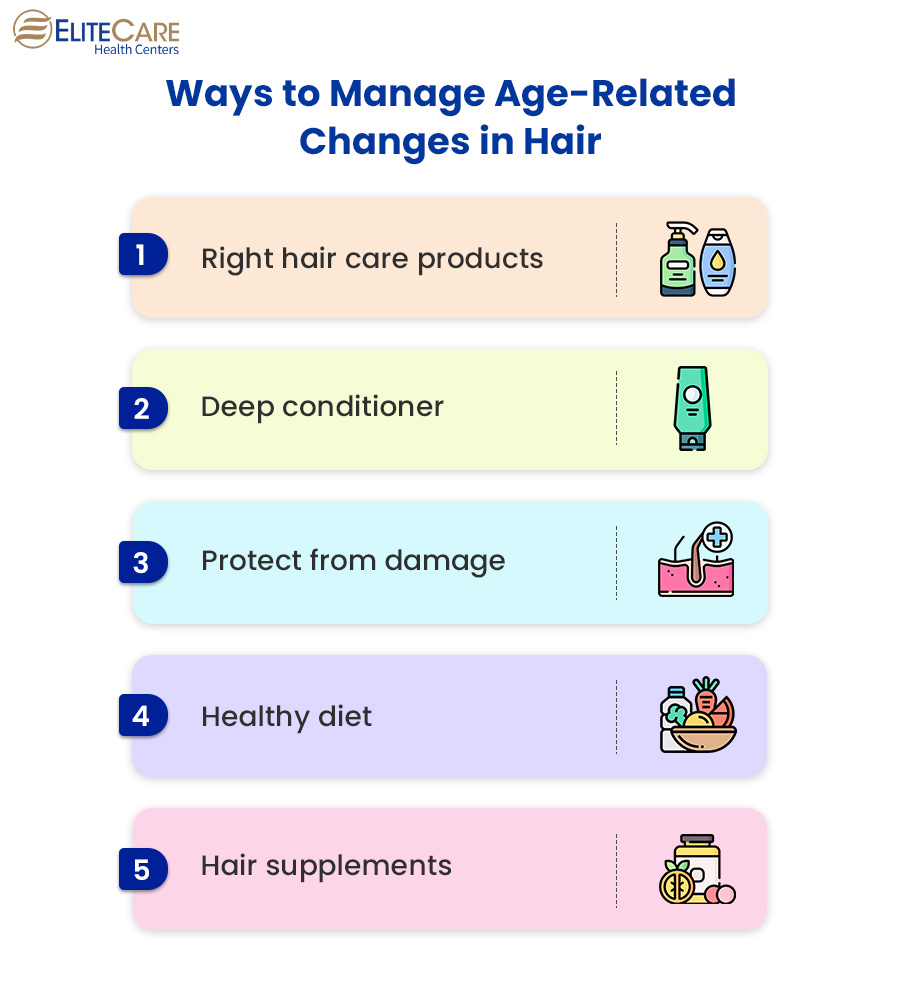
2. Hair care products and treatments
Many hair care products and treatments are available to help seniors manage age-related changes in their hair. Some products and treatments that can be helpful are:
Moisturizing shampoos and conditioners
Look for products specifically formulated for dry or aging hair that contain moisturizing ingredients like oils and humectants to help hydrate and nourish the hair. Volumizing shampoos and conditioners can help add volume and thickness to thinning hair.
Hair masks and deep conditioners
These treatments can provide a more intensive dose of hydration and nourishment for the hair. Look for products that contain ingredients like avocado oil, shea butter, or keratin to help strengthen and repair the hair.Scalp treatments
The scalp becomes drier and more prone to irritation with age. Look for scalp treatments that contain ingredients like tea tree oil or salicylic acid to help soothe and clarify the scalp.Hair serums and oils
These products can help add shine and moisture to the hair while providing a protective barrier against heat styling and environmental damage. Look for products that contain lightweight oils like argan oil or jojoba oil to avoid weighing down the hair.Hair supplements
Taking supplements like biotin or collagen can help improve the strength and thickness of the hair from the inside out.
Not all products and treatments are suitable for all hair types, so it’s best to consult with a stylist or dermatologist to choose the products and treatments that will work best.
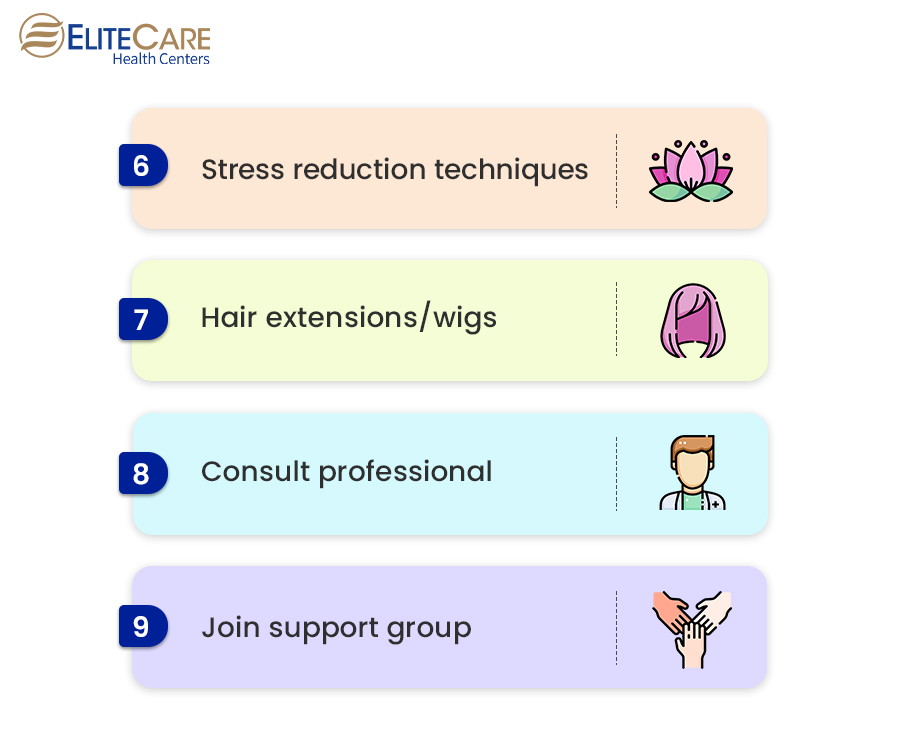
3. Strategies for coping with hair loss and thinning hair
For seniors experiencing significant hair loss or thinning, some strategies can help cope with the emotional impact, such as:
- Consider getting a new haircut or trying a different hairstyle that works well with the hair’s current thickness and texture. A shorter style or a layered cut can give the appearance of thicker, fuller hair.
- Talking to a primary service physician or a hair care professional for guidance and support
- Explore different accessories such as headbands, scarves and hats, or hair extensions, and wigs to help create the appearance of thicker, fuller hair.
- Take time for self-care activities like exercise, meditation, or hobbies that help relax and reduce stress, which can contribute to hair loss.
- Joining a support group or seeking other forms of emotional support to boost self-esteem and connect with others going through a similar experience to help find acceptance.
Takeaway
We experiment with hair treatments, colors, chemicals, and excessive heat styling when young without bothering about the hair damage and hair loss it can cause as we grow older. Our suggestions in this blog post can hopefully enable some improvement in the quality and growth of one’s hair even as we grow older.
Interestingly, the pandemic has seen many adults embracing their gray hair. Silver strands are now seen as a sign of wisdom, with many people confidently carrying them off. Keep in mind that self-care involves a healthy diet, regular exercise, and gentle hair care practices.
Hair loss and associated issues are common with age and do not necessarily define our worth or appearance. By following our suggestions in order to manage age-related changes, seniors can have healthy and vibrant hair that makes them feel confident and proud. In case of severe hair issue or pattern baldness connect with the nearest medical clinic in Florida or primary service provider.


